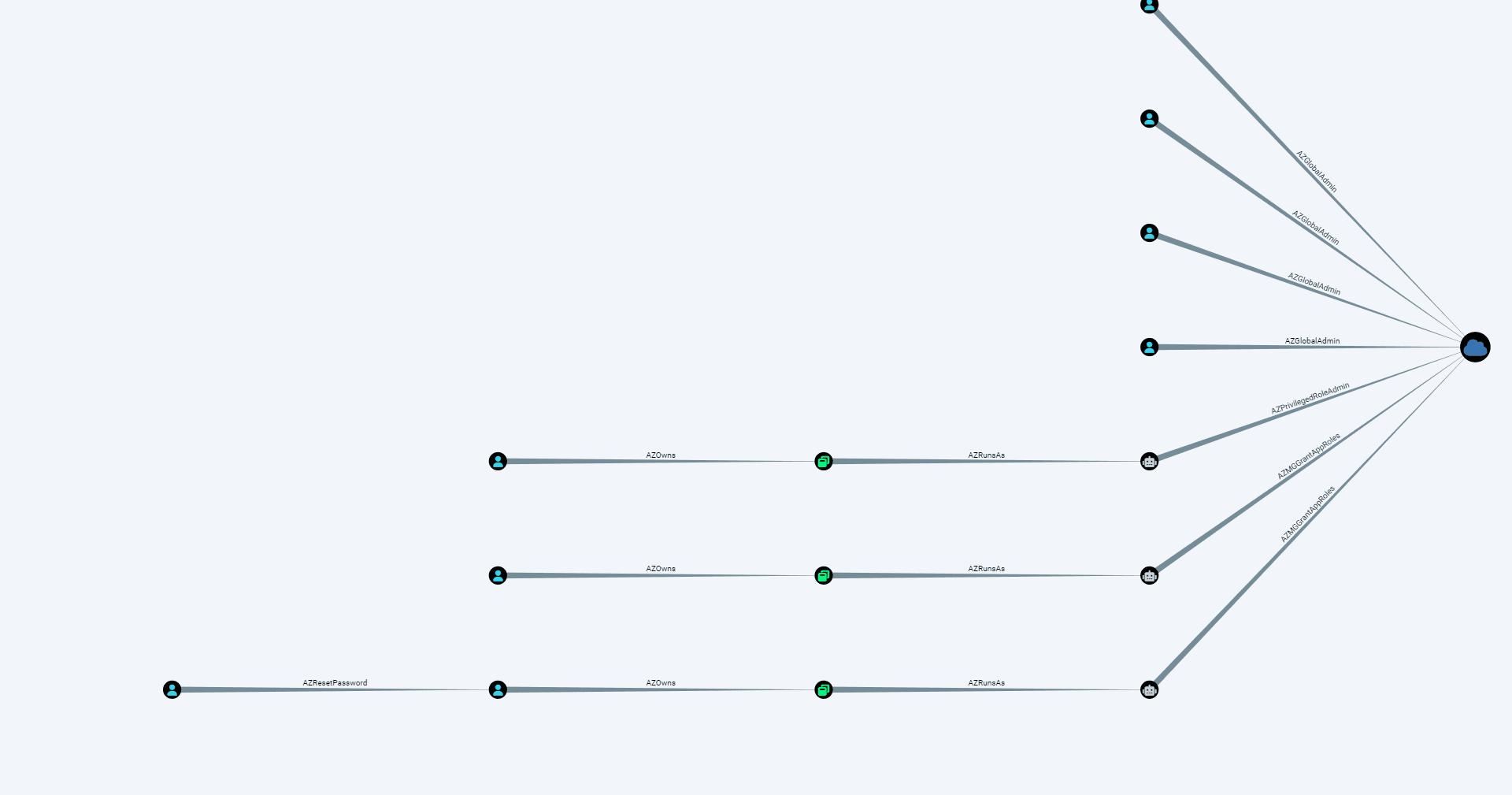
BadZure
BadZure is a PowerShell script that leverages the Microsoft Graph SDK to orchestrate the setup of Azure Active Directory tenants, populating them with diverse entities while also introducing common security misconfigurations to create vulnerable tenants with multiple attack paths.
Specifically, BadZure automates the process of creating multiple entities such as users, groups, application registrations, service principals, and administrative units. To simulate common security misconfigurations in real environments, it randomly assigns Azure AD roles, Graph permissions, and application ownership privileges to randomly picked security principals enabling the creation of unique attack paths. In line with the ‘Assume Breach’ principle, BadZure provides users with two methods of initial access to the vulnerable tenants it creates thereby simulating account takeover scenarios.
The key advantage of BadZure lies in its ability to rapidly populate and purge existing Azure AD tenants with randomly generated vulnerable configurations and pre-configured initial access facilitating continuous and iterative attack simulation (red team) and detection development (blue team) experimentation. It is designed for security practitioners with an interest in exploring and understanding Azure AD security.
Goals / Use Cases
BadZure was initially written to host the Azure AD Battle School: Hands-on Attack and Defense workshop at X33fcon 2023.
An Azure AD tenant populated with BadZure also enables red and blue teams to:
- Experiment with common Azure AD attack vectors and tools (for ideas => AzureAD Attack and Defense Playbook)
- Quickly stand up misconfigured Azure AD lab tenants.
- Obtain attack telemetry to build, test and enhance detection controls
- Execute purple team exercises in a safe setting
- Facilitate hands-on Azure AD security training
- Host dynamic Azure AD Capture the Flag (CTF) events
Attack Paths
Initial Access
BadZure facilitates initial access by simulating account takeover vectors such as password attacks and token theft. It achieves this through the assignment of a password (randomly generated or user-defined) or by supplying principal JWT access tokens. To support testing strategies such as password spraying, BadZure also automatically generates a ‘users.txt’ file containing the usernames of the created accounts. The credentials or tokens, made available in the output, enable users to step into the shoes of an attacker who is targeting an Azure AD tenant.
Privilege Escalation
BadZure crafts three privilege escalation attack vectors by simulating service principal abuse scenarios. It achieves this by intentionally introducing misconfigurations caused by Azure AD roles, Graph permissions, and application ownerships. A BloodHound-generated graph, showcasing the attack paths BadZure creates, is shown below.

Install & Use
Copyright (C) 2023 mvelazc0